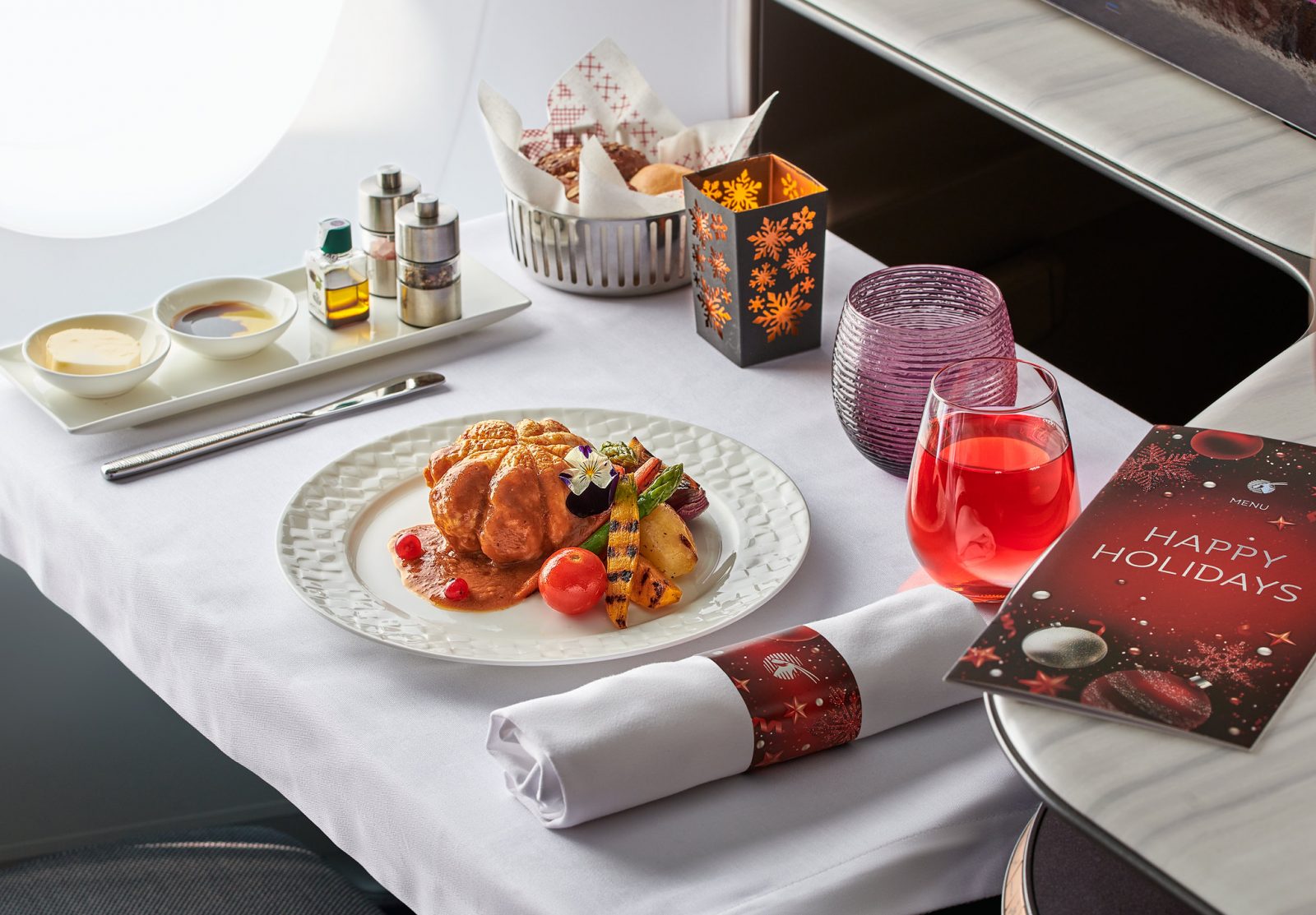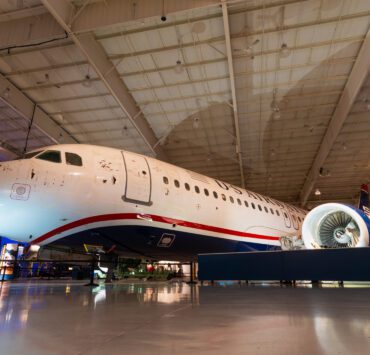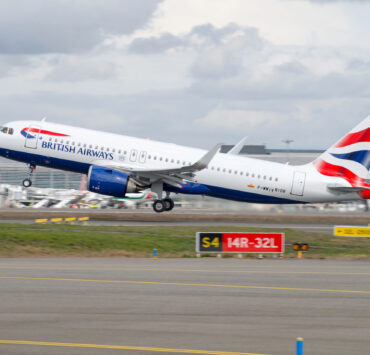
Dine-on-demand catering used to be the pure preserve of an airline’s First Class service, but with more and more carriers ditching First Class altogether or limiting their most exclusive cabin to only a handful of routes, we’ve seen some airlines experiment with the idea of dine-on-demand in Business Class.
The problem, however, is that dine-on-demand is a lot more complicated than it might seem to the average passenger, and it’s a concept that has failed to really take off despite the desire of airline product and service managers looking to differentiate their Business Class.
Qatar Airways is possibly the most well-known airline to offer a completely dine-on-demand service concept in Business Class, but there are some good reasons why it works at the Doha-based carrier and not other airlines.
In this article, I wanted to look at some of the reasons why airlines haven’t embraced dine-on-demand in Business Class even though it’s such a popular service with passengers.
It’s less efficient than a standard Business Class service
In recent years, we’ve seen Business Class cabins grow considerably in size. Delta Air Lines, for example, recently announced it would reconfigure its Airbus A350-900s in order to add eight additional Delta One Suites in order to meet the demand for premium cabins.
The new Delta One cabin will feature 40 suites in total, although this is actually a fairly modest number compared to the size of Business Class cabins being deployed by many airlines. United has Boeing 767s set up in a so-called ‘High J’ configuration with 46 Polaris Business Class seats, while American’s new premium heavy Boeing 787-9s will have 51 Flagship Suites.
Internationally, however, even that is modest. Emirates has 76 Business Class seats spread across the entire length of the upper deck of its Airbus A380s, while British Airways has the same number of seats spread across a whopping 20 rows on some Boeing 777-300 aircraft.
The point here is that the Business Class service has to be designed for efficiency. With so many passengers to serve, there’s very little room for personalization.
The counterpoint to this is that with dine-on-demand, not everyone will want to eat all at once, but in reality, this is rarely the case. Even Qatar Airways crew members guide passengers to eat just after takeoff in order to make the service as efficient as possible.
The reason dine-on-demand works in First Class is that there are only a handful of passengers to serve, but multiply that number by four, five or even six, and you naturally get to a point where an assembly line of sorts has to be introduced if you have any hope of serving everyone in a reasonable timeframe.
It requires more cabin crew
On widebody aircraft, at least, most airlines will staff their flights with more flight attendants than the legally required minimum, but the exact number is still a careful balancing act. Too few flight attendants and the workload becomes unachievable; too many and costs quickly increase.
Simply put, airlines know that dine-on-demand would require more flight attendants, and that’s not a cost they are willing to bear. In fact, in recent years, we’ve seen airlines try to simplify the service in premium cabins in order to reduce the number of flight attendants.
In 2019, for example, United Airlines ‘streamlined’ its Polaris Business Class meal service with pre-plated entree dishes in order to cut a flight attendant position from certain widebody aircraft.
Last year, British Airways experimented with adding a flight attendant position on certain poor-performing routes. The experiment turned out to be a flop so BA decided it wasn’t worth the investment to permanently add a flight attendant position on these routes.
It requires the support of cabin crew unions
In certain countries, unions are either banned altogether or are pretty toothless, so this simply isn’t an issue, but for the most part, aviation unions can be pretty formidable. As a result, airlines need the support of their workers before they implement pretty big changes to their onboard service.
A few years ago, Hong Kong-based Cathay Pacific experimented with dine-on-demand in Business Class, but the airline quickly killed off the new service routine after concerns were raised by flight attendants and their union.
Even more modest service changes can quickly run into trouble if a union objects. In 2019, British Airways introduced new display carts for starters and drinks to be served to passengers’ seats side. The concept was launched with much fanfare, but it was ditched just months later after health and safety issues were raised.
Aviation rules make it hard to implement
This is a particularly important point for long-haul flights where aviation rules stipulate that flight attendants must have a certain amount of inflight rest. The rules can vary massively from country to country, however, which means dine-on-demand could be achievable for an airline based in one country but totally unachievable for an airline based in a neighbouring country.
Knowing that flight attendants need to have this rest, airlines design service flows that are efficient and can be wrapped up quickly in order to get flight attendants on their breaks.
It might seem odd that flight attendants are rushing the service in a premium cabin where passengers have paid thousands of dollars for their ticket, but the requirement for flight attendants to get some rest is legally binding and in some cases, it really doesn’t leave a lot of time for the service to be wrapped up.
Mateusz Maszczynski honed his skills as an international flight attendant at the most prominent airline in the Middle East and has been flying throughout the COVID-19 pandemic for a well-known European airline. Matt is passionate about the aviation industry and has become an expert in passenger experience and human-centric stories. Always keeping an ear close to the ground, Matt's industry insights, analysis and news coverage is frequently relied upon by some of the biggest names in journalism.










Interesting, re the rest constraint isn’t there always an FA on duty? Surely they can shift change and by then not many stragglers for the remaining to handle. They shouldn’t be rushing customers when the FA(s) remaining on duty willl be unoccupied on long flights.
It would be great if you had of added the long suffering cabin crew at Etihad to this article. Forced to deal with dine on demand in business class with only ever the minimum legal amount of crew. Etihad is aggressively pursuing record revenue at the expense of all else – the crew rarely get time to eat themselves or use the bathroom. Qatar give their crew every resource to achieve their goal, full complement of crew and well designed aircraft. On top of the pay cuts that Etihad just enforced on their cabin crew it also exposes them to rapidly declining working conditions that would be illegal in most other countries.